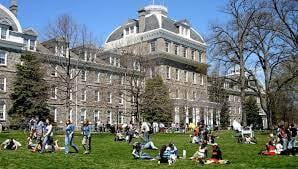
A liberal arts college is a four-year institution of higher education with a focus on undergraduate programs of study that lead to a bachelor's degree. Students take courses in the humanities, arts, sciences, and social sciences. The colleges tend to be relatively small and place value on the close relationships between students and their professors.
Features of a Liberal Arts College
Now let's look at those features in more detail. A liberal arts college has several qualities that distinguish it from a university or community college. In general, a liberal arts college is characterized by the following:
- Undergraduate focus: The number of graduate students at a liberal arts college is low or zero. This means professors are dedicated exclusively to undergraduates, and your classes will rarely be taught by graduate students.
- Baccalaureate degrees: Most degrees awarded from a liberal arts college are four-year bachelor's degrees such as a B.A. (bachelor of arts) or B.S. (bachelor of science).
- Small size: Nearly all liberal arts colleges have fewer than 5,000 students, and most are in the 1,000 to 2,500 student range. This means you'll get to know your professors and peers well.
- Liberal arts curriculum: Liberal arts colleges focus on broad skills in critical thinking and writing, not narrow preprofessional skills. Along with a focused major, liberal arts students will take a breadth of courses in fields such as religion, philosophy, literature, math, science, psychology, and sociology.
- Faculty focus on teaching: At a large university, professors are often evaluated for their research and publishing first, and teaching second. At most liberal arts colleges, teaching has the top priority. The "publish or perish" model for faculty tenure may still be true at liberal arts colleges, but the equation for tenure will place much greater emphasis on teaching.
- Focus on community: Because of their small size, liberal arts colleges often highly value the interaction of faculty and students. The overall educational environment tends to be more intimate and personal than at larger universities. If you don't like the idea of 500-person lecture halls and professors who don't know your name, a liberal arts college might be a good choice.
- Residential - The majority of students at liberal arts colleges live at college and attend full time. You'll find far more commuter students and part-time students at public universities and community colleges.
Examples of Liberal Arts Colleges
You'll find liberal arts colleges throughout the country, although the greatest concentration is in New England and the Middle Atlantic states. Among the country's top liberal arts colleges, Williams College and Amherst College in Massachusetts often top the national rankings, as do Swarthmore College in Pennsylvania and Pomona College in California. These schools are also extremely selective and select fewer than 20% of applicants each year.
While liberal arts colleges share some common features, they also vary significantly in personality and mission. Hampshire College in Massachusetts, for example, is well known for open and flexible curriculum in which students receive written evaluations rather than grades. Colorado College has an unusual one-course-at-a-time curriculum in which students take a single subject for focused three-and-a-half week blocks. Spelman College in Atlanta is a historically black women's college that wins high marks for social mobility.
From Reed College in Portland, Oregon, to Macalester College in Saint Paul, Minnesota, to Dickinson College in Pennsylvania to Eckerd College in St. Petersburg, Florida, you'll find excellent liberal arts colleges throughout the country. By Grove, Allen.

 (630) 841-3193
(630) 841-3193